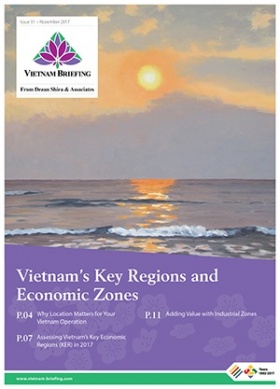Vietnam: Media Habits of FMCG Consumers
Driven by the growth in living standards, disposable income, foreign investment, and economy, Vietnam’s fast-moving consumer goods (FMCG) market is projected to grow by five to six percent in 2018, with rural areas growing faster than cities. In addition to retaining existing consumers, attracting new ones will continue to be a priority for FMCG brands.
To do so, understanding the impact of advertising and how it translates into purchasing is key for an effective marketing strategy. According to a recent report by Kantar Worldpanel, a company dealing in consumer insights, segmenting consumers by demographics is not enough anymore, and brands need to have a detailed understanding of the different advertising channels, such as TV, outdoor, and digital, and how it impacts their potential consumers. FMCG will account for the majority of the media advertising spending in Vietnam, which is predicted to reach VND 68 trillion (US$ 3 billion) by the end of 2018, according to GroupM.
Importance of media campaigns
According to Kantar Worldpanel, the average impact of a media campaign on total sales is around 4.5 percent. More than a third of the people who are drawn towards an advertising campaign will convert into new consumers.
Smaller brands tend to benefit from new shoppers, while bigger brands are more focused on retaining their existing consumers. Nowadays, demographics is not enough and requires a detailed understanding of the media habits and its relation to purchasing behaviors.
Media consumption in Vietnam
Television continues to remain the most important advertising channel for FMCG brands in Vietnam. However, in the last few years, digital channels have grown at a rapid pace.
According to the report, television has 17 percent higher consumption, which includes reach and frequency, than digital in the four major urban centers, Ho Chi Minh City, Hanoi, Da Nang, and Can Tho. In rural areas, digital channels consumption is less than half that of television.
In 2018, television will continue to account for the majority of the advertising spend, at 66 percent, due to its high exposure. Online channels could reach 30 percent. Hence, brands need to maintain a delicate balance between both these major channels.
Reach and frequency
Channels such as outdoor, newspaper, magazine, radio, cinema, and loudspeaker are available to brands, but due to low frequency, which is the number of times a person is exposed to the message of the advertisement, television and digital channels continue to remain a favorite for advertisers.
In terms of reach in the four urban hubs, television leads, followed by outdoor, digital, newspaper, magazine, radio, and cinema. In rural areas television leads as well, followed by outdoor, loudspeakers, digital, radio, newspaper, and magazine.
Digital channels lead in terms of frequency in the urban areas, followed by television, radio, newspaper, outdoor, magazine, and cinema. In rural Vietnam, television is ahead of digital, radio, and loudspeakers, while outdoor, newspaper, and magazine have similar frequencies.
Through loudspeakers, which is one of the key channels in rural Vietnam, the Cultural Centre of the commune usually organizes activities which can be used for advertising.
In the FMCG sector, the key decision makers are the millennial housewives below the age of 40, who account for 63 percent of the total media consumption in urban areas, while in rural areas it is 48 percent. In addition, they also go online for an average of four hours per day, which again highlights the fact that brands need to maintain a balance between the two major channels.
Regional differences
Due to the difference in shopping habits between the different regions in Vietnam, media consumption trends also differ.
Urban
Between Hanoi and Ho Chi Minh City, traditional channels such as newspaper and magazines are preferred more in Ho Chi Minh City. In Hanoi, digital channels, such as news sites, social networks, and chatting have a higher share of the total consumption compared to Ho Chi Minh City.
Media consumption through television and outdoor channels is similar for both cities.
Rural
Apart from television and digital channels, which have the highest media consumption in all the rural areas, loudspeakers and radio lead among the rest. Media consumption through outdoor advertising and newspaper is the most in central rural areas.
Magazines lead in the northern rural areas, followed by southern and central areas. Media consumption through radio is almost equal in the north and south, while consumption through loudspeakers is similar in the central and southern rural areas.
Going forward, retaining existing consumers will continue to be a priority for brands compared to attracting new ones. Changing needs and increase in spending on non-FMCG goods are the major challenges facing brands in Vietnam. In 2018, health and beauty products will continue to attract more consumers compared to sectors such as food, household care, and personal care products.
Vietnam Briefing is produced by Dezan Shira & Associates. The firm assists foreign investors throughout Asia and maintains offices in China, Hong Kong, Indonesia, Singapore, Vietnam, India, and Russia.
Please contact vietnam@dezshira.com or visit our website at www.dezshira.com.
- Previous Article Relocating to Vietnam to Mitigate the Effect of the US – China Trade War
- Next Article Vietnam Releases the Administrative Procedure Compliance Costs Index
































